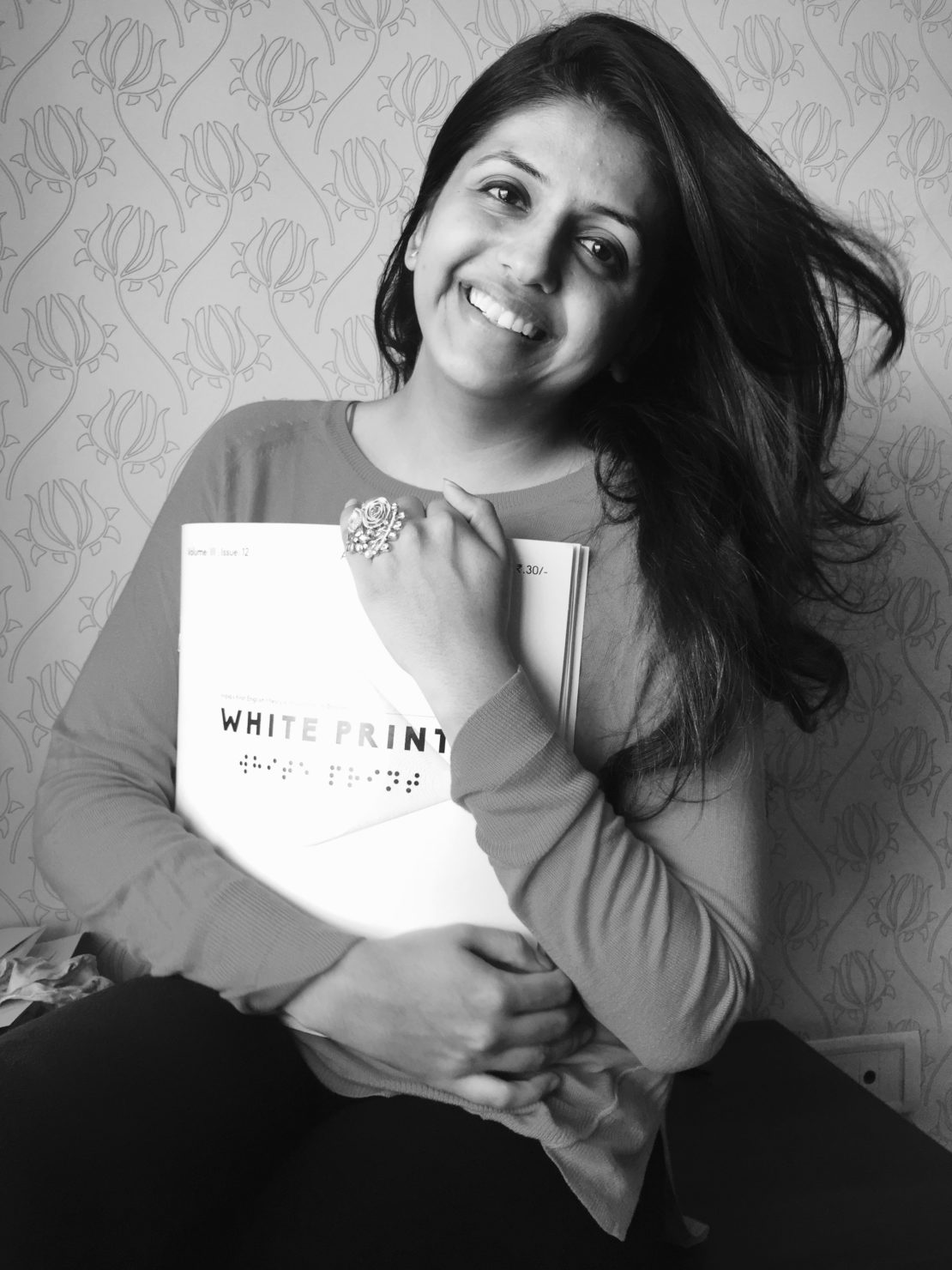In touch with the readers: India's lifestyle magazine for the blind
In Goa's State Central Library, the Braille section is surprisingly well-stocked. Long tables are covered with colourful charts in Braille. The shelves contain newsletters, books and models of animals. Among all this is a cubicle stocked with White Print, India's first lifestyle magazine for the visually impaired.
The founder and editor of White Print is Upasana Makati, 26, a Mumbai-based entrepreneur. Her interest in the visually impaired began rather randomly. "At the end of each day I have a habit of reflecting back on the day, reviewing what happened, thinking about what I read and saw," she said. "One night, I idly wondered how the blind start their day. I can't do without a physical newspaper every morning; what do they read for leisure?"
Chasing that thought, Makati called several friends that night to ask if they knew anything. She then turned to Google, which revealed only newsletters from organisations that work with the visually impaired. "It bothered me that there was no reading material available," she said, "so I visited the National Association of the Blind (NAB) in Mumbai."
The NAB is India's premier association for the visually impaired. Formed in 1952, the organisation's mission includes empowering people who have visual problems. There are an estimated eight million blind people in India, and another 28 million who suffer from other visual impairments.

Makati's suggestion that she might start a lifestyle publication for the visually impaired was initially met with apprehension and disbelief, as no such magazine existed. But she was persistent.
“I spent time talking to the blind, asking if they would read a publication like this,” says Makati. “I got a positive response. So in three months I quit my job, convinced that this was what I wanted to do.”
But it wasn't smooth sailing; it took eight months to get her title, White Print, registered as a periodical. Since she was working solo, a lot of the other administrative tasks also took longer than expected.
The first issue of White Print launched in May 2013. Sixty-four pages of lifestyle and culture stories, distributed for free by India Post (which doesn't charge postage for publications in Braille). Stories included travel, fiction, and profiles of successful people like music director Amit Trivedi, swimmer Bhakti Sharma, and members of the India blind cricket team.
The magazine also contained one major advertisement, which covered the month's publication costs. “Before the magazine launched, I sent over 200 emails to the marketing departments of various companies asking them for advertising or sponsorship,” says Makati. “Advertising in Braille is text-heavy and not something [many companies] are familiar with.” Of those 200 emails, only one got a reply. The Raymond Group of Companies, a clothing line, took out a five-page ad featuring their spring/summer 2013 collection.
Every new issue brings in a few new advertisers, too. Coca-Cola recently paid for an innovative musical ad, which played its Hindi anthem each time the reader opened the centre spread.
Explore
"We're not green because some bloke in marketing told us it was a good idea" Amani al-Khatahtbeh is talking back for young Muslim women Think frugalToday, 37 editions later, Makati has around 400 subscribers: individuals as well as institutions. "We have libraries across the country, old-age homes, schools, hospitals and even management institutes like IIM Kolkata (the Indian Institute of Management) who subscribe," said Makati. "Increasing our subscription base is a top priority right now. Apart from that, our larger vision is to get more Braille books on the shelves of bookstores and we're working on that this year."
As the magazine's reputation slowly grows, so does her base of contributors. Makati sources all content and edits the magazine herself. Freelance writers contribute some articles, Makati writes others. Caravan, a literary magazine, gives her a story a month to publish, as does author Sudha Murthy. "We have travelogues, features on music, success stories of people from different backgrounds, as well as tech stories like information about apps that might help our readership."
One of Makati's favourite reader stories is about a young girl who told her about the conversations her family had around the dinner table. Every member of the family had something new or interesting to contribute, except for her. The introduction of White Print meant that she now had access to culture and travel and art. "It widened her world," said Makati.
For anyone who loves reading, whether visually impaired or not, that is all we hope for.